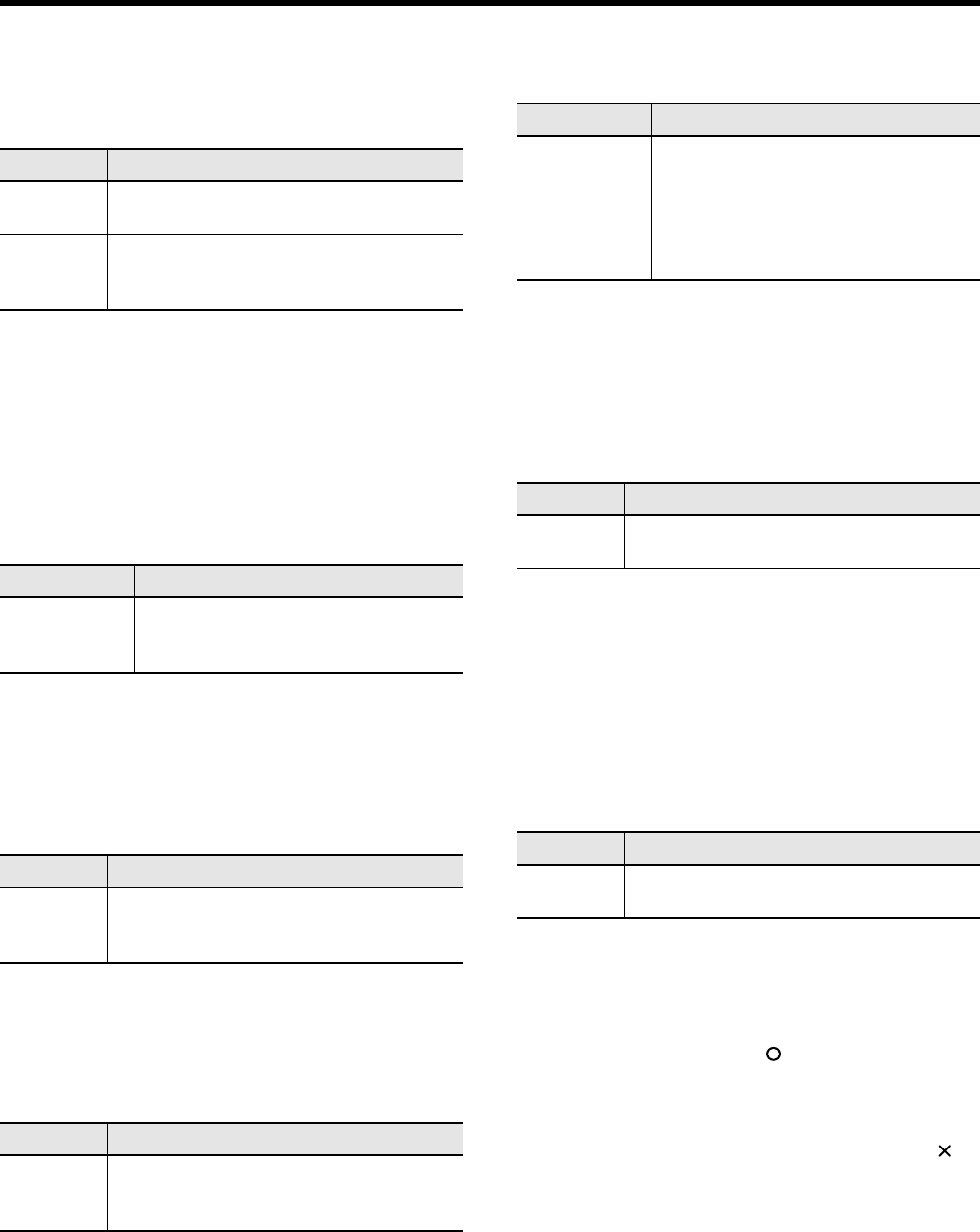
87
Convenient Functions
■
Setting the Tuning Curve (Stretch Tuning)
Pianos are generally tuned so that the low range is flatter and the high
range is sharper than equal tempered pitches. This method of tuning is
unique to the piano, and is known as “Stretched Tuning.”
■
Adjusting Resonance when the Damper
Pedal is Depressed (Damper Resonance)
You can adjust this resonance (Damper Resonance) when the damper
pedal is depressed.
On an acoustic piano, holding down the damper pedal will allow the
remaining strings to resonate in sympathy with the sounds that you
played from the keyboard, adding a rich resonance. The resonance is
called “Damper Resonance.”
■
Adjusting the Resonant Sounds when the
Keys are Pressed (String Resonance)
When the keys are pressed on an acoustic piano, the strings for keys
that are already pressed also vibrate sympathetically. The function
used to reproduce this resonance is called “String Resonance.”
■
Playing Sounds When the Keys Are
Released (Key Off Resonance)
This adjusts sympathetic vibrations such as an acoustic piano’s key-off
sound (the subtle sound that occurs when you release a note).
■
Adjusting the Keyboard Touch (Key Touch)
You can adjust the touch (playing feel) of the keyboard.
■
Making Fine Adjustments to the Keyboard
Touch Sensitivity (Key Touch Offset)
You can make fine adjustments to the touch sensitivity of the keyboard.
You can adjust the keyboard touch in even greater detail than
specified by the Key Touch setting (see preceding section)
■
Changing the Velocity When the Key Touch
is Set to “Fixed” (Fix Velocity)
This sets the velocity the sound will have when the keyboard touch (p.
p. 53, p. 87) is set to “Fixed.”
If you turn the keyboard’s touch sensitivity “Fixed,” all notes will sound
at a fixed loudness regardless of how strongly you play the keyboard.
The setting described below specifies the loudness in this case.
■
Listening to a Piano Designer demo
You can hear a demonstration of the various differences in sound
created by the Piano Designer function (p. 86). When the Piano
Designer screen is shown, press the [ ] button to access the Piano
Designer Demo screen. To hear the demo, proceed as directed by the
screen. You can also select the piano designer demo from “Select a
Demo” screen (p. 93).
When you have finished with Piano Designer Demo, press the [ ]
button in the “Piano Designer Demo” screen.
Setting
Explanation
On
This tuning curve expands the low range and high
range. It is suitable for piano solos.
Off
This is the standard tuning curve. This is the right
choice when using Dual performance (p. 56), or
when playing in ensemble with other instruments.
Setting Explanation
Off, 1–10
Increasing the value will increase the amount of
effect. When set to Off, no Damper Resonance
is applied.
Setting
Explanation
Off, 1–10
Increasing the value will increase the amount of
effect. When set to Off, no String Resonance is
applied.
Setting
Explanation
Off, 1–10
Increasing the value will increase the amount of
effect. When set to Off, no Key Off Resonance is
applied.
Setting Explanation
Fixed,
Super Light,
Light, Medium,
Heavy,
Super Heavy
You can adjust the sensitivity with which the
keyboard responds to your playing.
If you turn the keyboard’s touch sensitivity
“Fixed,” all notes will sound at a fixed loudness
regardless of how strongly you play the
keyboard.
Setting
Explanation
-10-0-9
Increasing this value will make the keyboard feel
heavier.
Setting
Explanation
1–127
Increasing this value will increase the volume of
your keyboard playing.
HPi-7S-e.book 87 ページ 2007年8月27日 月曜日 午後2時39分


















